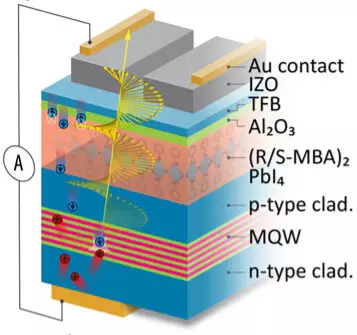For decades, traditional electronics have played a crucial role in powering our digital world. At the heart of this technology lies the semiconductor, which operates by transmitting information through electrons and holes—charged carriers that symbolize binary code in “1s” and “0s.” This method, while laid the groundwork for the modern computing era, is limited by a fundamental barrier: the ability to efficiently control the magnetic properties of these charged carriers. As electronic devices grow increasingly complex and compact, the demand for data processing has surged, leading to an urgent need for innovations that can surpass the capabilities of conventional electronic systems. Addressing these limitations has spawned interest in spintronics, a field that exploits the intrinsic spin of electrons and offers the potential to create devices with vastly improved information-processing capabilities.
The Promise of Spintronics
Spintronics, or spin transport electronics, captivates researchers’ imaginations with the proposition that the orientation of electron spins—denoted as “up” or “down”—can function as binary information similar to the classical bits in conventional electronics. The potential for increased data storage and faster processing is astounding, as the technology could facilitate an order of magnitude more information—all while potentially reducing energy consumption. Yet, despite its allure, the commercial application of spintronic devices has been stymied by significant challenges, particularly concerning the maintenance of stable electron spin orientation during data transmission. This stability is typically achieved through ferromagnets and magnetic fields, both of which complicate device design and reliability.
Groundbreaking Advances in Optoelectronics
A recent study led by physicists at the University of Utah, in collaboration with researchers from the National Renewable Energy Laboratory (NREL), has achieved a remarkable breakthrough that could redefine the future of spintronics. By innovatively modifying existing optoelectronic devices—specifically, conventional light-emitting diodes (LEDs)—the researchers have developed a mechanism that allows for the precise management and control of electron spin at room temperature. This transformative capability is achieved without the reliance on ferromagnetic materials, offering a promising alternative that could accelerate the adoption of spintronic technologies in practical applications.
The modification involved replacing the electrodes of standard LEDs with a specially-designed spin filter, composed of a hybrid organic-inorganic halide perovskite material. In doing so, the team successfully demonstrated the process of injecting spin-aligned electrons into the semiconductor infrastructure of the LED. This injected spin-aligned electrons resulted in the emission of circularly polarized light, a defining feature indicative of a functional spintronic device.
The Role of Chirality in Spin Filtering
A key innovation in this study is the employment of chiral hybrid organic-inorganic halide perovskites, which have the unique property of chirality—a type of molecular asymmetry. This property allows for selective transmission of electron spins based on their orientation. In simpler terms, chiral layers can permit electrons with a specific spin orientation to pass through while blocking those with the opposite orientation. This selective filtering is pivotal in achieving the necessary conditions for manipulating electron spin effectively.
Previous research has uncovered the potential of these chiral materials to enhance spin transport, but the recent study marks a significant leap forward; it not only proves the practicality of the concept but also showcases the ease of integration with existing electronic frameworks. By merely replacing a single electrode in an off-the-shelf LED with the novel spin filter, the researchers were able to generate efficient, spin-polarized light—a feat previously considered unattainable.
Implications for Future Electronics
While this groundbreaking discovery opens a trove of possibilities for developing advanced spintronic devices, it also raises pressing questions about the underlying mechanisms responsible for the observed spin polarization effect. Researchers acknowledge that further inquiries are necessary to elucidate the specifics and intricacies involved in achieving controlled electron spins within this new framework.
The excitement surrounding this breakthrough is palpable, as it represents a convergence of materials science, quantum physics, and engineering that could usher in a new era for both optoelectronics and spintronics. The prospect of employing other chiral materials—such as DNA—presents far-reaching implications across various fields, encouraging further exploratory research and paving the way for innovations that could reshape our approach to data storage and transmission.
This revolutionary spin-polarized light breakthrough showcases the potential to transition from traditional semiconductor technologies to advanced spintronic devices. As we stand on the precipice of this technological paradigm shift, there is palpable anticipation for what lies ahead in the evolving landscape of electronics.

